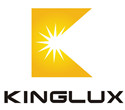| TEL:
+86 510 82123195
|
| Mobile: |
+86 18168862789
|
| FAX:
+86 510 84602998
|
| Email: |
info@kingluxlens.com
|
| MSN:
kingluxlens@hotmail.com
|
| Skype:
kingluxlens
|
| Q Q:
2852820700,2852820701,2852820699
|
|
|
| |
Company News
|
Current Location: Home >
News >
Company News
|
|
designing UVLED lamps sterilization
|
 |
Compared with traditional ultraviolet lamps, the following differences should be considered when designing UVLED sterilization experiments:
1. Wave band: Different wave bands have different killing effects on bacteria and viruses. The traditional ultraviolet mercury lamp uses discharge to generate ultraviolet radiation with a wavelength of 253.7nm. However, according to the latest research results, the sterilization effect of ultraviolet rays may be higher near 264 nanometers. In terms of deep ultraviolet UVC LED sterilization and disinfection, standardization is facing a series of challenges. For example, ultraviolet mercury lamp sterilization is mainly at 253.7nm, while UVC LED wavelength is mainly distributed at 200-280nm, which brings a series of differences for subsequent application solutions. .
2. Ultraviolet Dose: Sterilization requires sufficient radiation intensity, sufficient time and suitable wavelength. The intensity of ultraviolet radiation depends on factors such as the luminous intensity of the effective spectrum in the ultraviolet light source, the light output angle of the lamp (beam concentration), and the distance between the lamp and the irradiated object. Generally speaking, the higher the radiation intensity, the better the effect; the more the beam is concentrated on the surface of the irradiated object, the better the sterilization effect; the closer to the irradiated object, the better the effect; the cumulative radiation time is the total radiation time of the illuminated object under the ultraviolet lamp The longer the effect, the better.
3. Luminous efficiency: At present, UV LEDs cannot completely replace mercury lamps in terms of luminous efficiency. UVA LED technology is relatively mature, EQE can reach 50-60%, more work for UVA products in the future will focus on the development of the application system level. The external quantum efficiency of UVB and UVC-band deep-ultraviolet LEDs is still relatively low, EQE is generally below 10%, and commercial products are basically 1% to 3%.
4. Application areas: UV LEDs also have the advantages of compactness, portability, environmental protection, safety, and easy design, which can give birth to some application requirements different from traditional mercury lamps. For example, portable electronic disinfection products, elevator handrail sterilizers, sweeping robots, etc. have already appeared. This is where traditional ultraviolet light sources are difficult to use.
5. Ultraviolet penetration: UV LED has a good inactivation effect on the surface of the directly irradiated object, but the penetration is not strong, and it has no obvious effect on the interior and covered parts of the object that the light cannot penetrate. Ultraviolet lamps can make use of the dispersibility of the ozone produced to make up for the shortcomings that the ultraviolet rays only travel in a straight line and sterilize.
6. Sterilization differences: UV lamps of different brands and specifications have great differences in sterilization. When purchasing, confirm the light source radiation wavelength, radiation intensity, protection design, work requirements, etc., and select the appropriate lamps.
|
|
|


